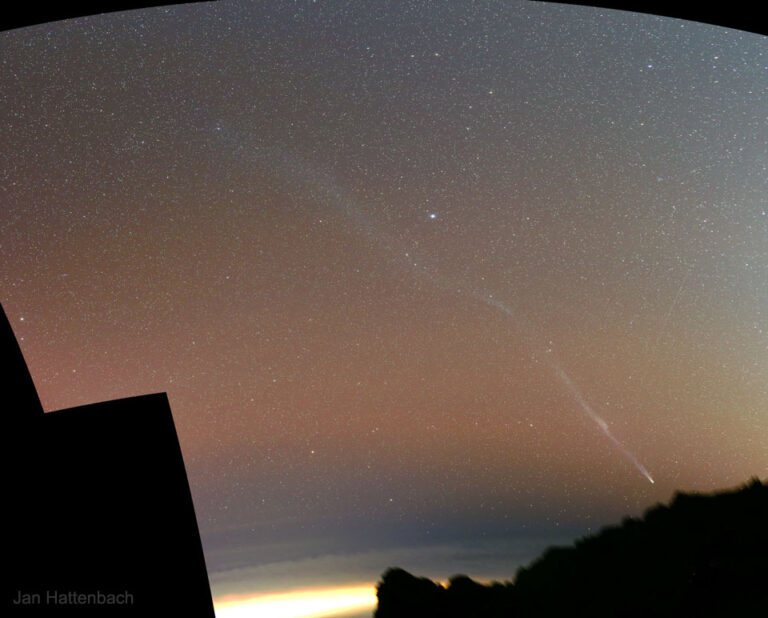2021年12月30日 The Further Tail of Comet Leonard Image Credit & Copyright: Daniele Gasparri Explanation: Comet Leonard, brightest comet of 2021, is at the lower left of these two panels captured on December 29 in dark Atacama desert skies. Heading for its perihelion on January 3 Comet Leonard’s visible tail has grown. Stacked exposures with a wide angle lens (also displayed in a reversed B/W scheme for contrast), trace the complicated ion tail for an amazing 60 degrees, with bright Jupiter shining near the horizon at lower right. Material vaporizing from Comet Leonard’s nucleus, a mass of dust, rock, and ices about 1 kilometer across, has produced the long tail of ionized gas fluorescing in the sunlight. Likely flares on the comet’s nucleus and buffeting by…









